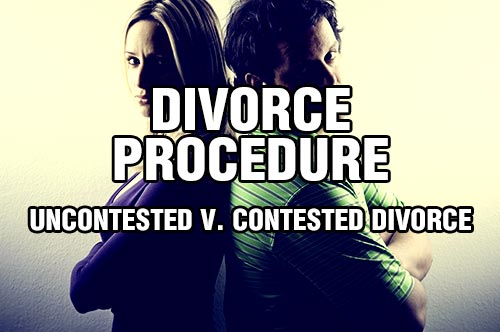Slowly the courts have begun to see they don’t need to award alimony permanently, like it always was in the past. Today, alimony can still be awarded permanently, but it also serves to “get people back on their feet” after a divorce. Not just women, but men as well. Although alimony is usually reserved for longer marriages (i.e. more than 10 years), and/or when one spouse earns substantially more than the other, this is not always the case. Alimony is basically dependent upon the paying spouse’s ability to pay and the receiving spouse’s need for support. How is Alimony determined in Your Uncontested Divorce?
How is alimony determined
Most courts typically don’t consider marital fault when awarding alimony, although each state is different. The court sometimes might list economic fault, like squandering marital assets on gambling or an affair, as a factor when determining alimony.
Ultimately, alimony is determined on a case-by-case basis. Check your state’s laws (known in the legal world as statutes) to see what they have to say about it. If you are in disagreement with your spouse about whether or how much alimony will be paid, you should speak with a mediator and/or family law attorney to work those issues out. A mediator can use his or her training in conflict resolution to help you reach a settlement. An attorney can advise you how cases are typically decided in your area, and if you are likely to be awarded alimony.

How are alimony payments determined
If you are in agreement, creating a post-divorce budget will really help you see what you’ll need to get by after your uncontested divorce is final. You should look at the assets, income, taxes, and earning ability of both you and your spouse. Come up with an amount you think is fair, taking into account each person’s financial situation and your financial situation as a couple. If needed, refer to your state’s laws to see how it would likely be decided if you went to court. Once you’ve come up with an amount, decide how regularly the alimony will be an what type of alimony you think is fair.
4 different types of alimony according to statute
Here’s a brief description of the different types of alimony:
- Periodic
Periodic alimony includes alimony payments made at specified times (i.e. $300 per month or $100 per week), for a specified amount of time. - Lump-Sum
Lump sum alimony is a one-time payment of alimony, made payable in a lump sum (i.e. $25,000 paid when the uncontested divorce is final). Sometimes the law looks at lump sum alimony as property division, which might affect its tax status. If you’re going to make or receive a lump sum payment of alimony, it’s very important to seek advice from an accountant and/or an attorney, who can go over the rules with you and help you protect your rights. - Permanent
Permanent maintenance is the payment of alimony for the duration of the payee’s life, made in periodic payments such as every month or every week. - Rehabilitative
Rehabilitative alimony is for the purpose of rehabilitating the other party (i.e. while the spouse is going back to school or trying to find employment) for a specified period of time.
You’ll want to consider the tax consequences of whatever type of alimony you choose. Typically, alimony is tax-deductible for the payor, and taxable income for the recipient. However, again, lump-sum alimony is often more complicated. Even if it costs a little bit to hire an attorney, it might be well worth the cost.
Page 10 of IRS publication #504, “Divorced or Separated Individuals,” (PDF format) lists many of the requirements and tax laws regarding alimony. This might give you some insight. Whether you’re doing the uncontested divorce yourself, or using an attorney to handle everything for you, being informed of the laws can save you money in legal fees.









